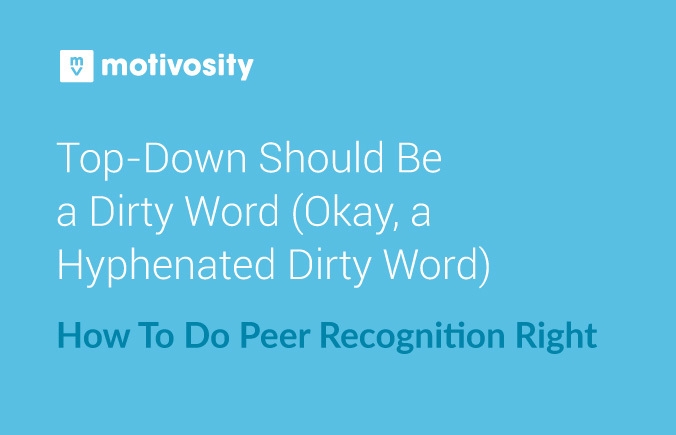How To Do Peer Recognition Right
Top-Down Should Be a Dirty Word (Okay, a Hyphenated Dirty Word)
1. The Millennial Mindset
2. The Pace of Work
3. The Gig Economy
Failed Attempts
Popular perks
Parties, picnics, amusement park days
Hackathons, offsite brainstorms, CEO suggestions boxes
Employee of the month, quarterly manager lunches, annual company employee awards
More HR programs
Peer Recognition is the Right Way Forward
Peer Recognition Delivers
Let’s check it out.
1. Millennials Thrive On Peer Recognition:
2. Peer recognized employees solve problems faster:
3. Work anytime, anywhere. Get recognized anytime, anywhere.
Time to Do Something About It
The Motivosity team would love to help you get started.
